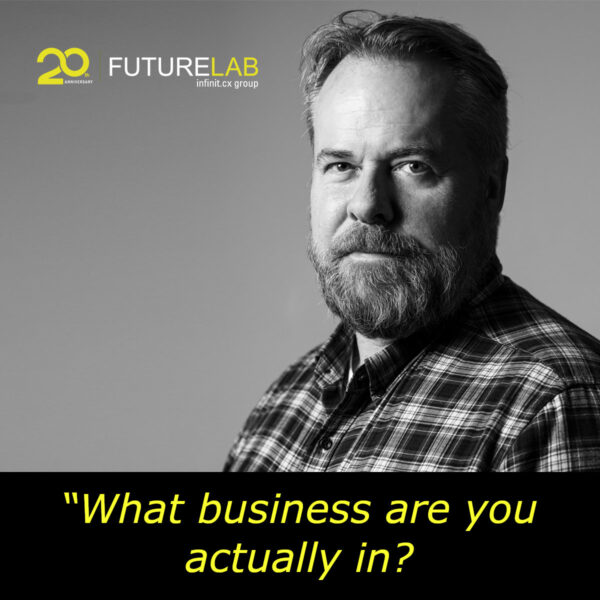by: Alain Thys
Last week, I had a great chat with Donovan Neale-May, executive director at the CMO Council. We mainly talked about their latest report "Giving the Customer Voice More Volume" (must read!) and I found our views and passions to be remarkably similar. After all, while everyone seems to be "talking" about the need of businesses to focus on their customers, there seems to be a rather limited amount of "walking".
A few facts from the report (n= 500 senior marketers from around the world)
The Talk
- 59% of respondents claim that a CEO-driven culture of customer-centricity is embraced by their organisations,
- 83% think that the customer experience is (increasingly) important in determining brand advocacy and business performance.
The Walk
- Three-quarters of these same respondents have not yet adopted a formal Voice-of-the-Customer Programme.
- 56% of marketers have no programmes in place to track or propagate word-of-mouth among their customers.
- Only 23% actually track the volume and nature of customer mail.
According to Donovan, many CMO’s are missing the opportunity of truly connecting their companies to the customer. Silo-based organisations ensure many have an opinion, but no one is really in charge of the customer experience. Customer information is fragmented in various locations, depriving the average call centre employee of the integrated view they need to do their job. Leads get dropped because departments and processes don’t connect. And in the end, the only conversations senior executives have with their customers, is in the business class lounge of their local airport.
So how do you then turn the corner? I thought I’d give a shot at writing up a few "recommended steps" for CMO’s wanting to make their business more customer-centric. They are inspired by my conversations with Donovan as well as the customer experience and advocacy/NPS work I have been doing for MCE at places like Philips (click for case) and Lexus (click for case). As always, any suggestions to improve on the thinking are very welcome.
STEP 1: START AT THE TOP
No matter what books or gurus may say, customer-focus is a top-down game. From childhood we have learned to follow the example of those that lead us, and that means that customer-centricity should be mindset of all C-level executives. Not in words, but in actions. The management board needs to be seen talking to customers, allocating resources in the right places, balancing quick volume wins against long-term customer value. If this commitment is not there, even the best intended customer-centricity projects will falter. That is why CMO’s should first turn their peers into customer evangelists. Then they can move on the business.
STEP 2. SHOW THEM THE MONEY
Enthusiasm will get you part of the way, but no self-respecting CEO will reorganise a business around the customer without a solid business case. After all, being nice to customers is good, but there’s also that minor matter of shareholder value. The CMO’s second step on the customer-centricity ladder is therefore to demonstrate the financial benefits of "happy customers" to the organisation. Happy customers are more profitable, so having many of them makes good business sense. But while many customer initiatives are good at highlighting the investments they require, most forget to highlight the return. CMO’s should remedy this, by demonstrating the ROI on customer efforts.
STEP 3: START WITH THE PEOPLE
To really focus on the customer, companies will need to update their information systems and processes (remember the "one customer file"?). But before getting too bogged down in flow-charts and project plans, CMO’s should wire the people in the right way. Tear up the detailed customer interaction and scripts. Show staff and vendors how to listen and care. Not only in the front lines, but at every level of the organisation. Every department eventually affects the customer experience, and thus the profitability of the business. Only when the people "get this", organisational changes have a fighting chance. If only because they’ll drive them.
STEP 4: HELP THEM DO THE RIGHT THING
Once a customer-focused mindset takes hold of the organisation, the people will start fixing the systems & processes themselves. But they will encounter challenges. Legacy implementations will limit what can be done. Corporate politics and habits will slow down initiatives. Unpopular, but needed budget cuts will impact morale. Here, CMO’s should step in to help the organisation get out of its people’s way. And, where needed, to roll up their sleeves and personally ensure that customers get what they deserve. Because if this support is not given, the most well-intentioned projects will get stuck at the initiative stage and in the end the customer won’t notice.
STEP 5: MAKE IT CLEAR YOU MEAN BUSINESS
Customer-centricity doesn’t always come naturally. Reluctance and even resistance may arise. Then, CMO’s need to make it clear they mean business. Once the financial case for customer-focus is made, dissent should not be an option. CMO’s should be supportive when possible, but firm when needed. Making customer advocacy a "hard" KPI and holding managers accountable to it, is imperative. Publicly challenging customer toxic practices required. But also ensuring the resources keep going to the right places, even in challenging times. Rewarding people for getting it right. This will require tough choices. But it is exactly from those choices that people will judge the resolve of their C-suite to be truly customer-centric.
And those CMO’s who believe the five step programme is a bit too ambitious, there is also a "step zero". That is to stop reading this article, switch off their computer and go talk to a customer. Any customer. Now.
Disclosure: Management Centre Europe (MCE) is a long-standing customer and business partner of Futurelab.




